PMG XXI October 24-25, 1992
A four-person TIGHAR team spent two days at the pond, camping overnight. A metal detector search of the immediate area around a small rocky island in the middle of the pond turned up a badly rusted section of a cylindrical structure made of high-strength steel that had apparently exploded. When discovered, the interior surface of the artifact had an oily residue. Remnants of light blue paint on the exterior surface match descriptions of objects reported found near the island in the past. None of those objects are known to survive. The artifact recovered by TIGHAR is conserved at The Rooms, Newfoundland’s provincial museum in St. John’s. The discovery of an artifact consistent with the Legend of the Plane in the Pond confirmed the need for further investigation of the Gull Pond.
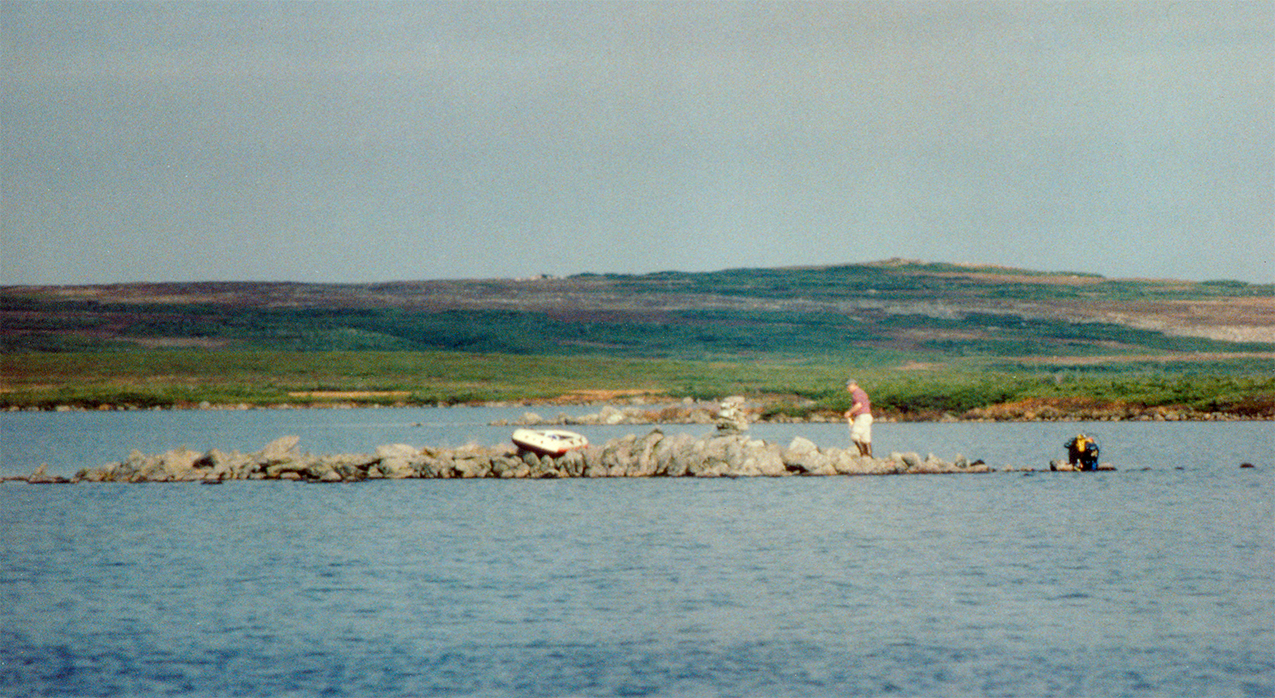 |
Ric Gillespie (L) and Lanny Lanoue (R) on the island. Lanny is at the location where the artifact was found. TIGHAR photo by P. Thrasher. |
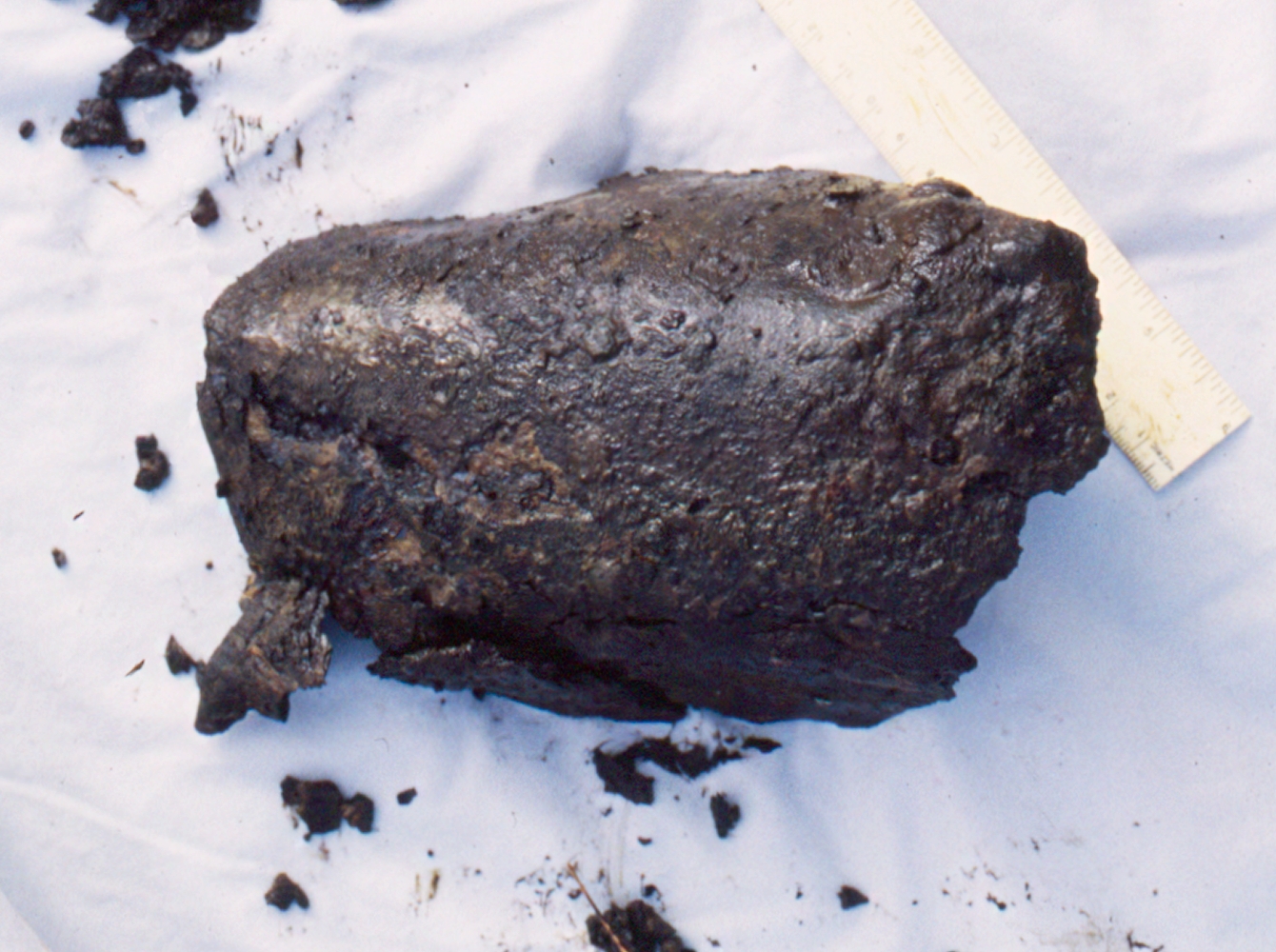 |
TIGHAR Artifact 1-21-P-1 within minutes of recovery October 25, 1992. TIGHAR photo by P. Thrasher. |
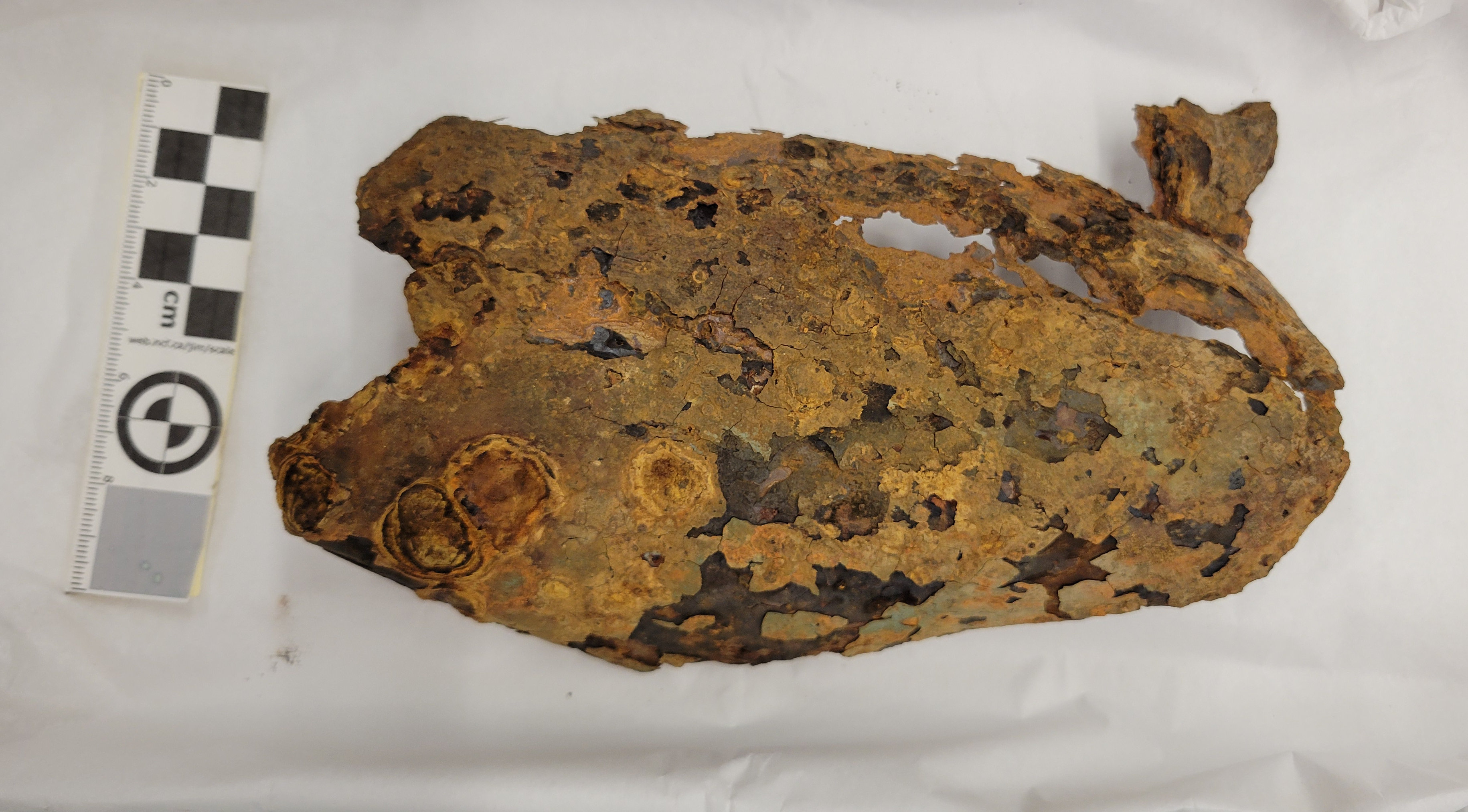 | TIGHAR Artifact 1-21-P-1, Newfoundland Borden No. CgAI-01/1, September 30, 2021. Photo by L. Dal. |
PMG XXII October 14-23, 1993
A year later, a five-person TIGHAR team collected data on the depth and nature of the pond bottom using a tripod-mounted theodolite with infra-red ranging capability on the shore. A team member in the pond carrying a graduated range pole with an infra-red reflector sampled 65 locations. The pond was found to have a maximum depth of seven feet. Shallow areas have a rocky bottom. Deeper areas have a flat clay bottom with a layer of silt and, in some places, aquatic vegetation.
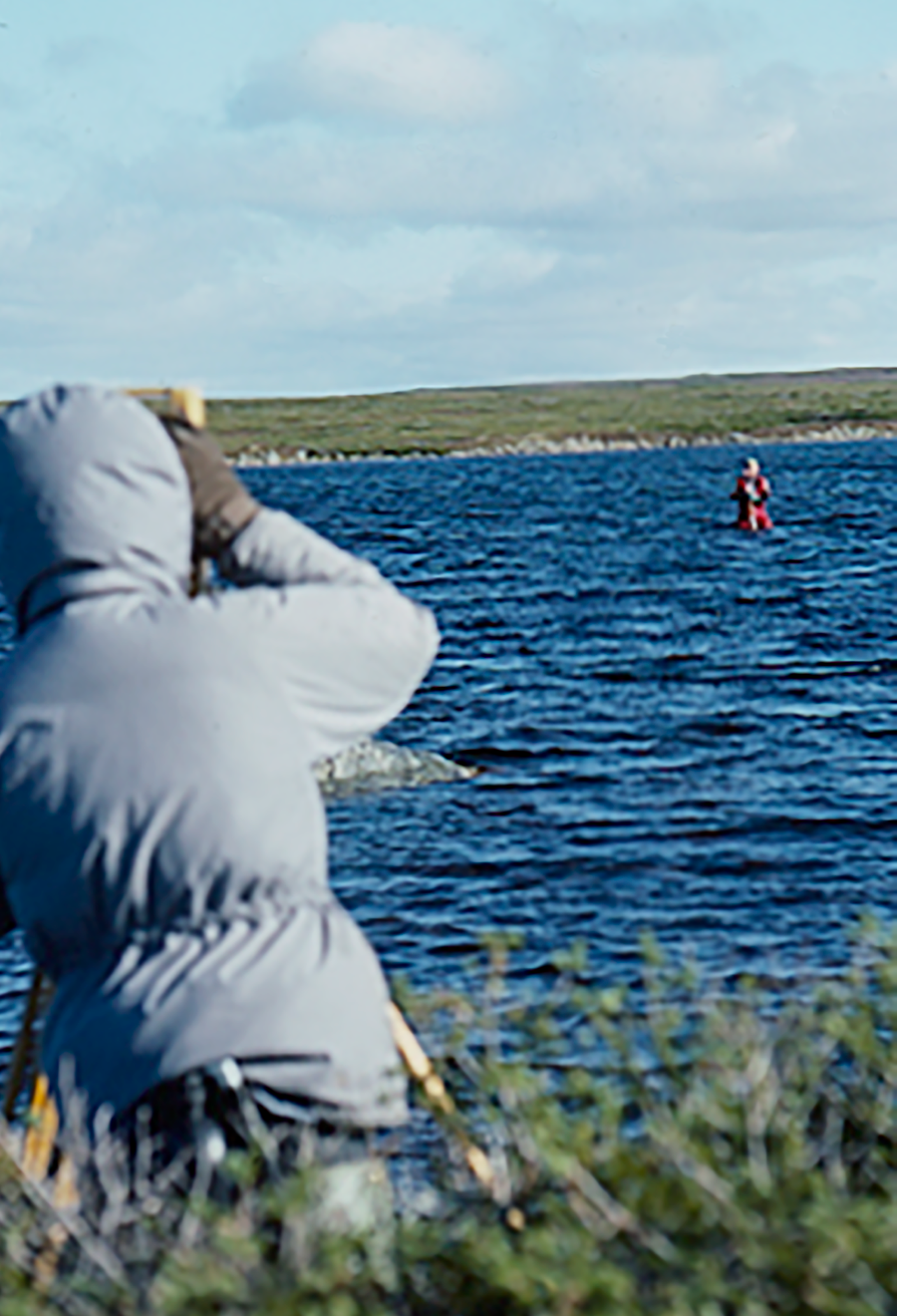
John Clauss takes a reading on Ric Gillespie during the October 1993 survey. TIGHAR photo by P. Thrasher. |
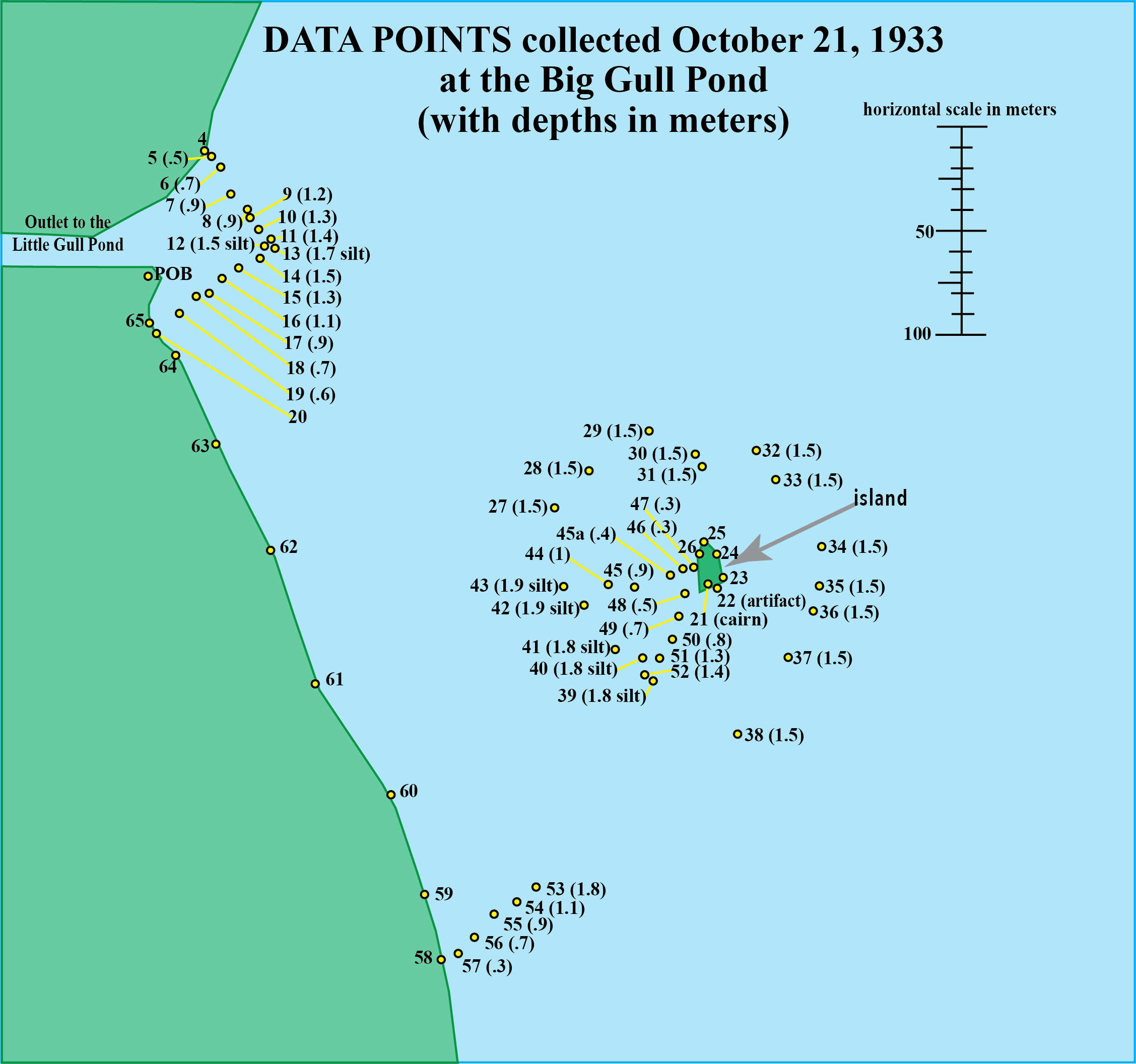 |
PMG XXIII December 15-19, 1993
A three-person TIGHAR team and a Newfoundland archaeologist investigated a small adjacent pond where early aerial photos showed an object thought to possibly be wreckage. Breaking through an inch of ice, the team searched the spot but found nothing and concluded the object in the old photo was probably a beaver dam.
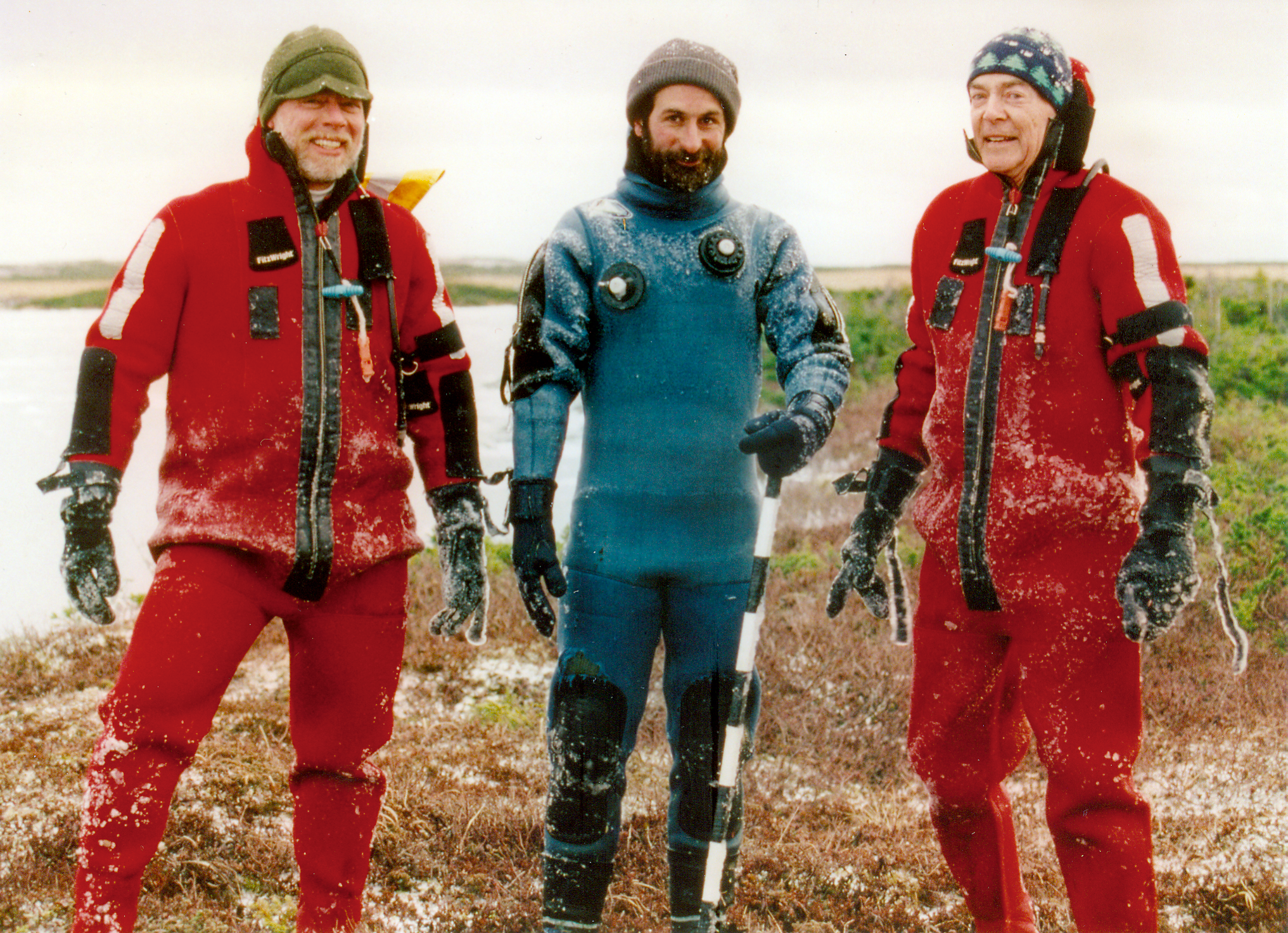 |
| Cold work. (L to R) Ric Gillespie (complete with beard), archaeologist Roy Skanes, TIGHAR member Dick Reynolds. TIGHAR photo by P. Thrasher. |
PMG XXIV March 22-31, 1994
In March 1994, TIGHAR returned to the now thickly-frozen Gull Pond to conduct a survey using an EM31 electromagnetic sensor towed across the ice in a small inflatable boat. Grid lines laid out on the ice allowed precision not otherwise achievable. The plan was for 14 hours of data collection over two days, but bad weather aborted the mission after a few hours and only a narrow band along the western shoreline was covered. Nonetheless, the data collected revealed intense electromagnetic activity in what we had been told was a geologically “quiet” pond. The electromagnetic targets were interpreted as possible metal wreckage.
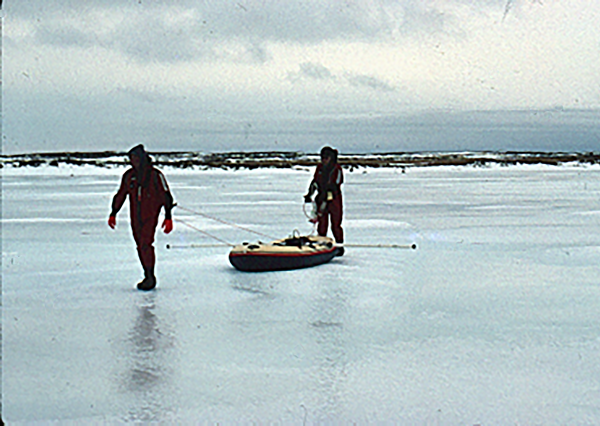
TIGHAR members Veryl Fenlason (L) and Kenton Spading collect electromagnetic data on the frozen pond in March 1994. TIGHAR photo by P. Thrasher |
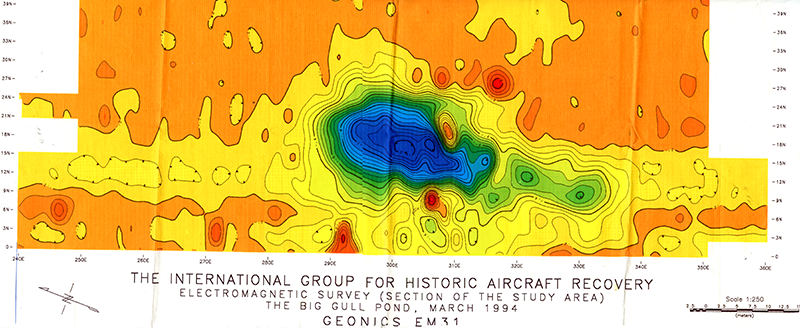
The electromagnetic data suggested the presence of a large metal object. |
PMG XXV May 21-28, 1994
Two months later the ice was gone and TIGHAR returned to investigate the electromagnetic targets. An EM31 electromagnetic sensor mounted on an inflatable boat was used to re-locate the targets. Divers in dry-suits with hand-held metal detectors did the physical examination. The targets all turned out to be naturally magnetic features, i.e. rocks with high magnetite content. The divers also did visual searching using masks and snorkels. A bathyscope was also used to view the bottom from an inflatable boat. The searchers passed over a few suspicious objects but were unable to relocate them to investigate.
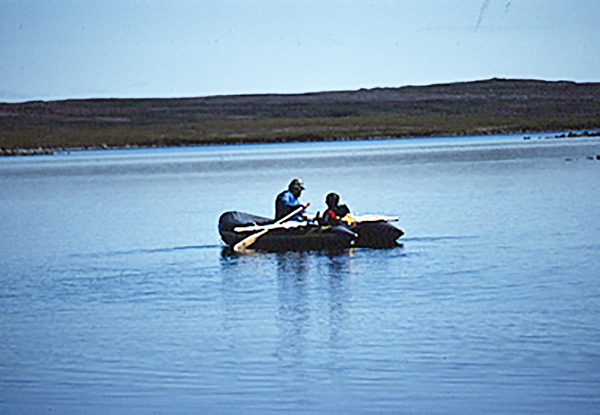
EM31 deployed from inflatable boat. TIGHAR photo by P. Thrasher |
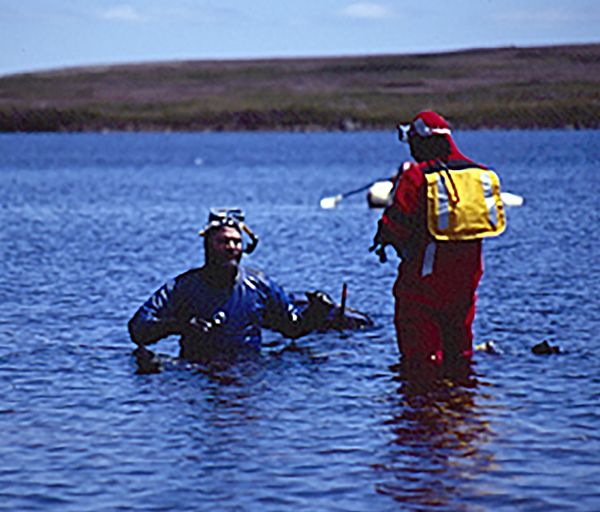 Divers with snorkels investigated targets identified by the EM31. TIGHAR photo by P. Thrasher |
PMG XXVI July 1994
A two-person TIGHAR team conducted oral history research in Cape Shore communities and made a brief visit to the Gull Pond on ATVs with a Fisheries Warden to investigate reports of illegal search activity. Evidence of activity was found but no charges were brought.
PMG XXVII September 17-21, 1994
A four-person TIGHAR team spent five days camping at the pond. Two team members used an EM61 electromagnetic sensor to locate magnetic anomalies. The other two team members were in the pond in wetsuits with snorkeling gear and metal detectors to investigate anomalies and search additional areas. A full week of searching was planned but operations were cut short when the tag end of an Atlantic hurricane brought driving rain and high winds. No artifacts were found.
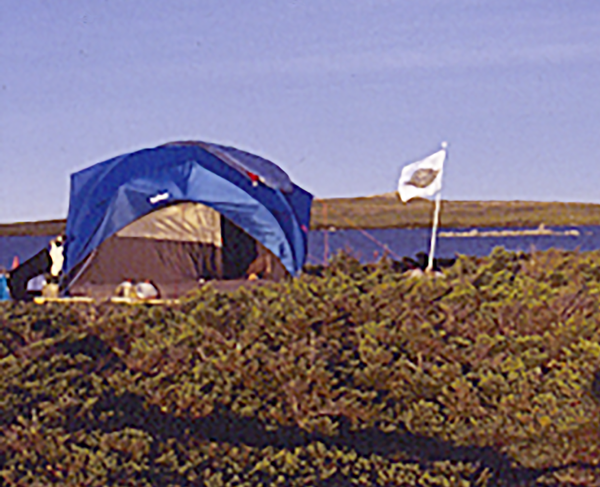 | TIGHAR camp September 1994. With no level surface and nowhere to set tent pegs, the tent was tied to plywood sheets and weighted with rocks. TIGHAR photo by R. Gillespie. |
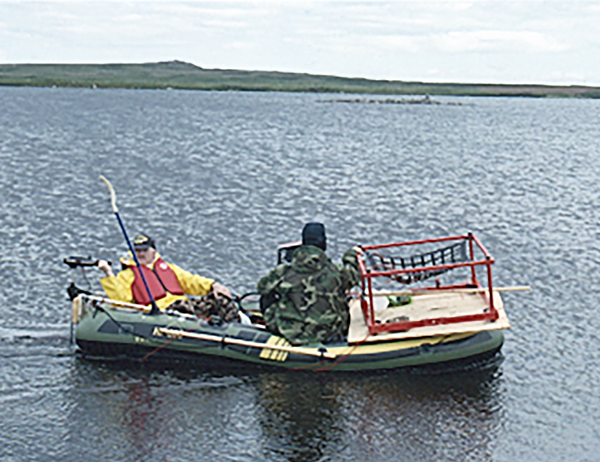 | TIGHAR members David Scott (L) and Kenton Spading operated an EM61 mounted on an inflatable boat powered by an electric trolling motor. TIGHAR photo by R. Gillespie. |
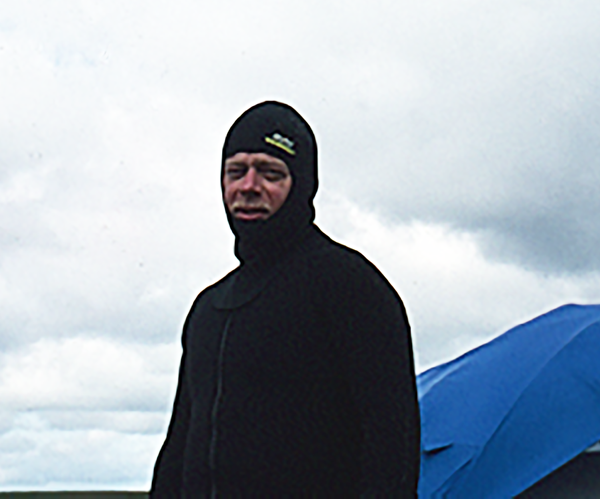 | Ric Gillespie (pictured) and archaeologist Jim Carucci wore wetsuits to search using hand-held metal detectors. Hypothermia became apparent after about four hours in the pond. TIGHAR photo by D. Scott. |
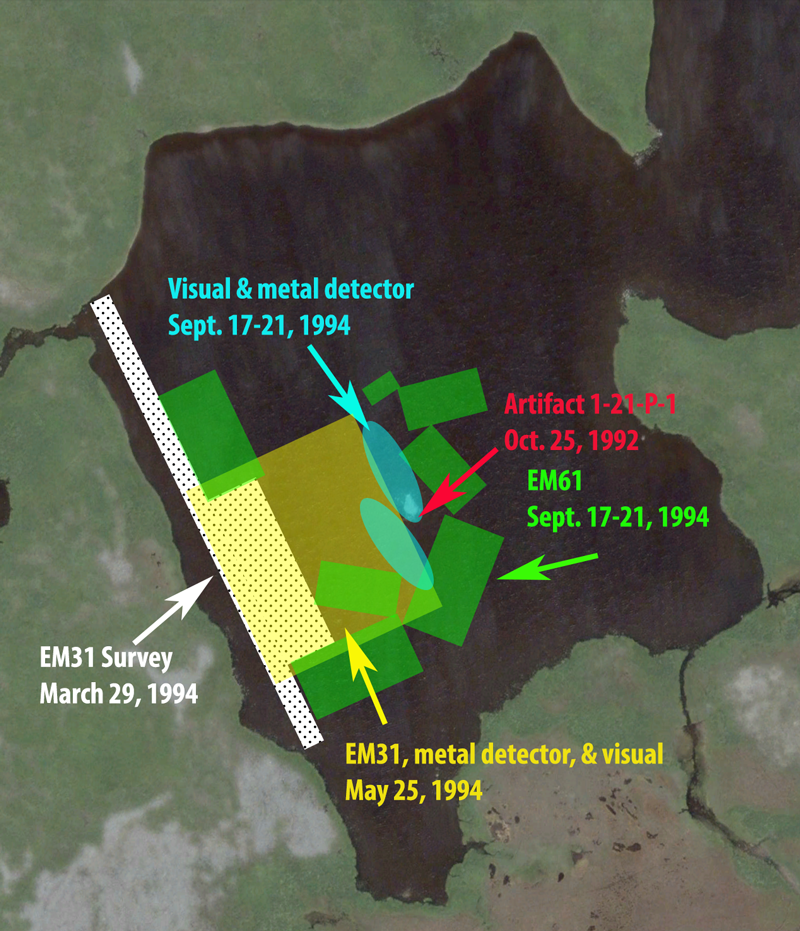 |
This map shows the approximate areas examined between October 1992 and September 1994. An April 1995 assessment of the work done at the pond concluded the most likely reason TIGHAR had failed to find identifiable airplane wreckage was because either the surviving wreckage is in a part of the pond which has not been surveyed or the wreckage has sunk too deeply into the pond bottom to be detected by the technology used. We decided we needed to search the entire pond with technology deployed from a helicopter, flying an electronically established grid, capable of detecting a metal object the size of the White Bird’s engine from a distance of 15 meters. Even if such technology existed, the cost of the helicopter time alone would be prohibitive. |
PMG XXVIII June 4-5, 1996
A two-person TIGHAR team hiked to Green Island Pond, packing in immersion suits and metal detectors, to investigate the possibility that we had been looking in the wrong pond. Nothing was found except the rusted remains of a beaver trap.
PMG XXIX August 2006
A four-person TIGHAR team hiked to English Pond to see if there might be wreckage there. Nothing was found.
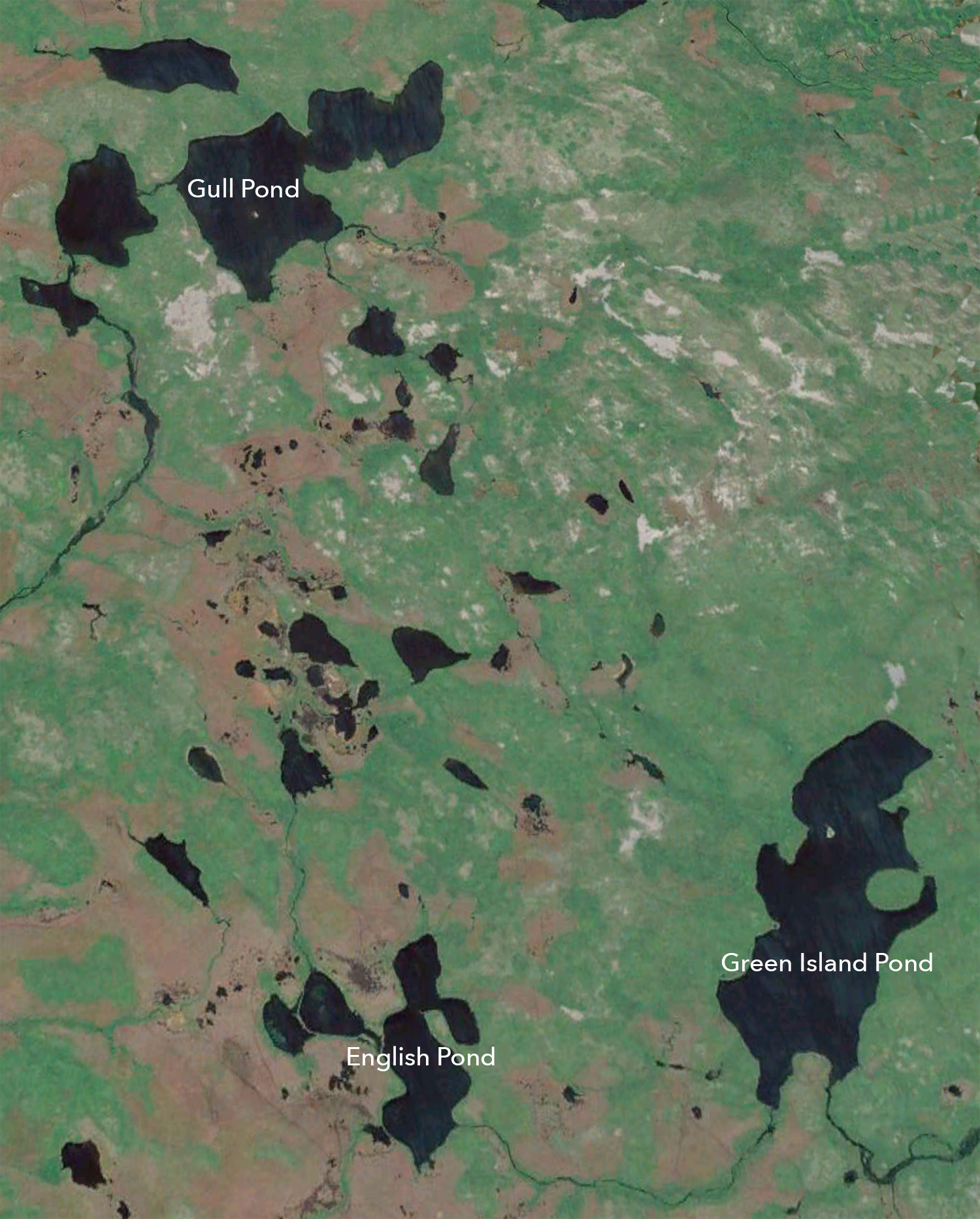
An interlude of fifteen years intervened while TIGHAR focussed on The Earhart Project.
PMG XXX September 25-29, 2021
In 2021, with the phenomenal growth of drone capability and the development of lighter, more effective, remote-sensing technology, a detailed geological survey of the Gull Pond was economically possible. On September 26, 2021, a drone magnetometry survey revealed why earlier electromagnetic surveys had detected so many false positives. The Gull Pond is far more geologically active than anyone imagined, with large dykes — cracks in the bedrock where highly magnetic magma had intruded millions of years ago — creating areas of intense magnetic “background noise” against which relatively small magnetic objects, like an engine, are impossible to detect. The survey report did, however, identify a few “hot spots” outside the intense areas that do not appear to fit the pond’s pattern of geological activity. Some of these are within areas already searched, but some are not. None of the targets identified in September had been detected or specifically investigated by earlier TIGHAR expeditions.
| 
